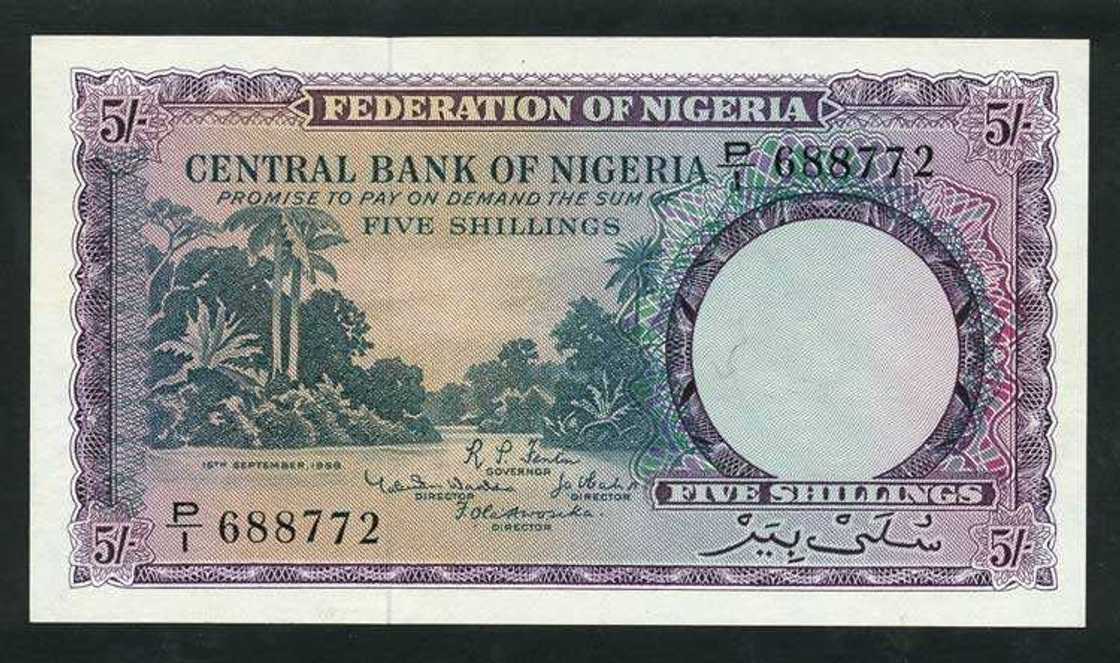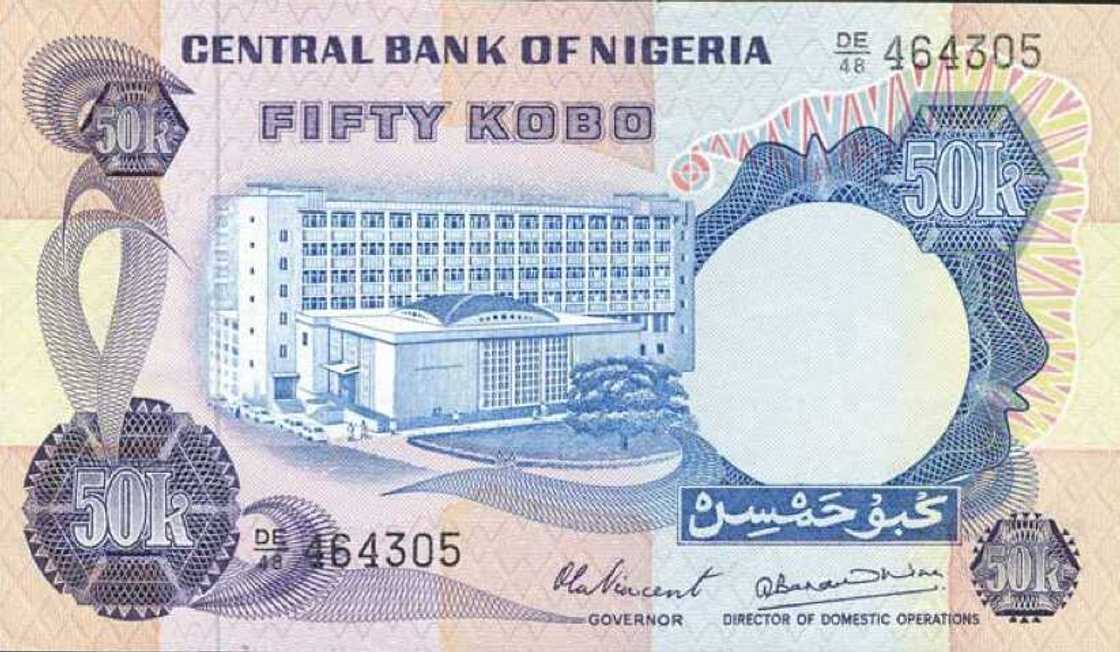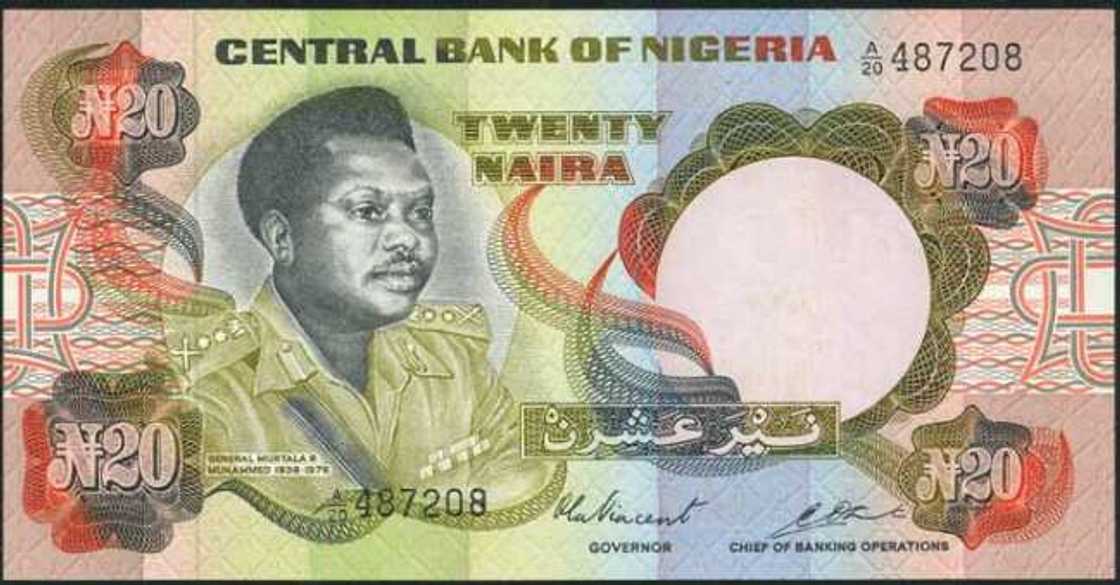From Pound to Naira: How Nigeria's currency has transformed in 100 years
- The introduction of new naira notes by the CBN has generated mixed reactions amongst Nigerians from all walks of life
- Nigeria used an entirely different currency before the Naira was introduced as the official legal tender?
- It may also interest you to know who coined the name, Naira and how he arrived at it
PAY ATTENTION: Сheck out news that is picked exactly for YOU ➡️ click on “Recommended for you” and enjoy!
On November 23, 2022, the Central Bank of Nigeria, on behalf of the Federal Government, unveiled new N200, N500 and N1000 notes. President Buhari did the unveiling during the Federal Executive Council (FEC) meeting in the presence of the CBN Governor, Godwin Emefiele; the Chairman of the Economic and Financial Crimes Commission (EFCC), Abdulrasheed Bawa; the minister of state for Budget and National Planning, Clem Agba, and other dignitaries.

Source: UGC
Since the unveiling of the new notes, there have been arguments for and against the new designs, which are set to flood the markets nationwide as banks continue to collect the older notes in circulation with a January 31, 2023 deadline.
As we anticipate the circulation of the new notes, it is imperative to learn how the Naira came to be and the different denominations and designs it has taken in the last five decades.
PAY ATTENTION: Subscribe to Digital Talk newsletter to receive must-know business stories and succeed BIG!
Using Pounds and Shillings in Nigeria
Before money came into being in this part of the world, various items were being used as means of exchange. These items included manilas, bottles, cowries, and beads, just to name a few.

Source: Getty Images
The Pounds, Shillings and Pence were introduced as legal tender in all the British-controlled African colonies in the 1880s. The Bank of England managed units of coins distributed by a privately-owned Bank for British West Africa till 1912. The units included one shilling, one penny, 1/2 penny and 1/10 penny.
The West African Currency Board (WACB) issued the first set of banknotes and coins to British colonies in Ghana, Nigeria, Sierra Leone and the Gambia from 1912 to 1959. At the time, the highest coin denomination was one Shilling and one pound was the highest banknote denomination.
The CBN was established in 1958 and on July 1, 1959, it issued Nigerian currency banknotes after the banknotes and coins issued by WACB were withdrawn. On July 1, 1962, to reflect Nigeria's new status as a republic, the inscription at the top changed from ’FEDERATION OF NIGERIA‘ to ‘FEDERAL REPUBLIC OF NIGERIA’.
In 1968, the notes were changed again following the misuse of currency banknotes during the civil war that almost tore the country apart.

Source: UGC
In comes Naira and Kobo in Nigeria
Following the government's decision to abandon the metric and adopt the decimal currency, the name of Nigeria's currency, Naira was coined by the then Federal Commissioner for Finance, Chief Obafemi Awolowo, in January 1973. It was, however, launched by the Minister of Finance, Alhaji Shehu Shagari.
Describing in an interview with Punch how Awolowo came about the name for the currency, one of his daughters, Tokunboh, said;
He just took the name of Nigeria and collapsed it to Naira. That’s what he told us and that was how he arrived at the name ‘naira’ and that was when he was the Federal Commissioner for Finance.
The one naira, which was equivalent to ten shillings, became the major unit, while the minor unit was called the kobo; a hundred of which made one naira.

Source: Getty Images
Banknotes and coins denominations in Nigeria
Denominations of 1⁄2, 1, 5, 10 and 25 kobo coins were introduced in 1973. The 1⁄2 and 1 kobo were in bronze and 5, 10 and 25 kobo coins were in cupro-nickel. Notes for 50 kobo, N1, N5, N10 and N20 were also introduced.
In February 1977, a new N20 banknote was issued. The new banknote was issued on the first anniversary of the death of the former Head of State, General Murtala Muhammed. It was the highest denomination at the time and it was the first to bear the portrait of a prominent Nigerian citizen.

Source: Getty Images
Timeline to redesign and introduction of more notes
According to the CBN, new currency banknotes of three denominations, namely N1, N5 and N10 were introduced on July 2, 1979. The notes had engravings reflecting various cultural aspects of Nigeria and respectively bore the images of eminent Nigerians.
To arrest the currency trafficking and laundering occurring at the time, the colours of all the banknotes in circulation were changed in April 1984.
In 1991, 50k and N1, which were in banknotes, were transformed to coins.
N100, N200, N500 and N1000 banknotes were launched in December 1999, November 2000, April 2001 and October 2005, respectively, under the administration of President Olusegun Obasanjo
Towards the end of Obasanjo's second term in office, 50 kobo, N1 and N2 coins were issued in February 28, 2007. The CBN then withdrew the 1⁄2 to 25 kobo coins from circulation.

Source: Getty Images
In the same month, the N2 coin was introduced as the CBN redesigned the N50, N10, N5, N1 and 50k. The N20 banknote was issued for the first time in a polymer substrate.
On September 30, 2009, following the acceptance of the N20 polymer substrate, the N50, N10 and N5 banknotes were also converted to the polymer substrate.
As part of plans to celebrate Nigeria's 50th anniversary in September 2010, the CBN released N50 Commemorative polymer banknote.
And then, on December 19, 2014, a N100 Commemorative banknote was launched.
President Buhari congratulates CBN over new naira notes design
After an earlier announcement by the CBN in October of plans to redesign some denominations of the Naira, President Buhari unveiled the new N200, N500 and N1000 notes in Abuja on November 23, 2022.

Source: Getty Images
Speaking at the event, Buhari, who was pleased that the new notes were locally printed by the Nigerian Security Printing and Minting (NSPM) Plc, commended the CBN for fortifying the notes with security features to make it almost impossible to counterfeit.
Source: Legit.ng


